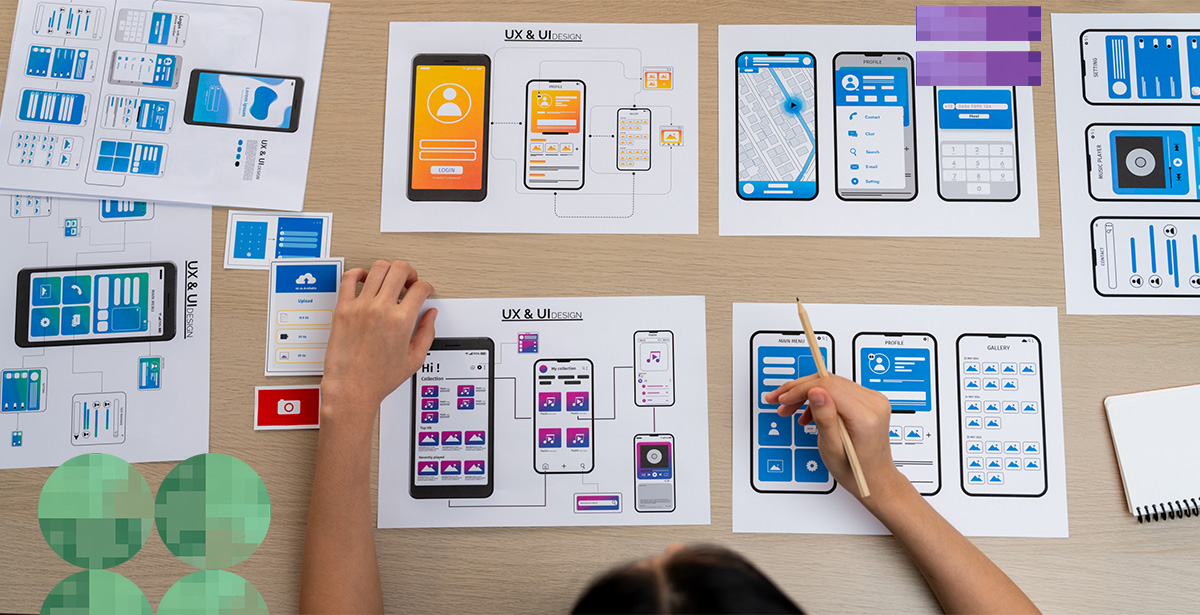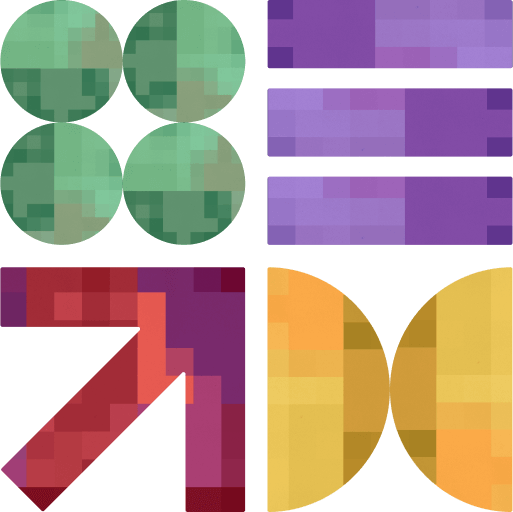What Mobile App Architecture Type Should You Choose?

Mobile app architecture isn’t just a technical choice; it’s your app’s survival strategy.
The wrong architecture is why 70% of apps fail. Even before a single user ever downloads them. That’s because they’re burdened by bloated code, endless refactors, and features that break faster than you can ship them.
So, before you start planning for your next app, get to know the core architecture types, where they excel, and where they fall short. That way, you can select one that scales seamlessly with your product, team, and long-term complexity.
Types of Mobile App Architecture
A mobile app’s architecture defines code structure, component interaction, and long-term scalability and maintainability as complexity increases. Here’s a breakdown of the main types and where they provide the most technical value.
1) Layered (N-Tier) Architecture
Layered architecture structures the application into horizontal tiers, commonly presentation, business logic, data access, and sometimes services or storage. Each layer is strictly responsible for a single concern and interacts only with its adjacent layers.
This pattern offers strong separation of concerns, which is crucial for large-scale systems.
Moreover, it enables clear modularization, making components easier to unit test, maintain, and replace. Teams can develop and deploy each layer independently, which also supports long-term scalability and service abstraction.
2) Model-View-Controller (MVC)
MVC organizes code into three roles
- Model (data and business rules)
- View (UI layer)
- Controller (interface between user input and system logic)
The Controller interprets input, updates the Model, and refreshes the View accordingly.
This model’s core strength lies in its simplicity and quick implementation. It’s particularly effective for small-to-medium apps with limited business logic.
On iOS devices, UIKit encourages MVC as the default. However, it can lead to tightly coupled codebases where Controllers become overburdened as complexity scales. This is commonly referred to as the “Massive View Controller” issue.
That said, the MVC mobile app architecture is a good entry point for teams new to structured app design.
3) Model-View-View Model (MVVM)
MVVM adds a ViewModel layer between View and Model. The ViewModel exposes data via observable streams (e.g., LiveData), allowing the View to bind reactively.
MVVM is especially powerful in reactive UI environments. It decouples business logic from UI state, enhances testability, and reduces boilerplate code for UI updates.
Therefore, it’s ideal for apps with dynamic, real-time UIs or complex state management requirements. It does, however, require a solid grasp of reactive programming and lifecycle-aware data flows.
4) Model-View-Presenter (MVP)
MVP takes the core idea of MVC and enforces stricter separation by making the View completely passive. The Presenter handles all interaction logic, retrieves data from the Model, and instructs the View on how to display it.
Its strength is deterministic control and testability. Since the Presenter operates independently of UI components, unit testing becomes straightforward.
MVP has been widely adopted in traditional Android development (pre-architecture components era), where tight control over the view lifecycle was critical. However, like MVC, the Presenter can become bloated if not carefully structured.
This type of mobile app architecture is best suited for teams seeking testable logic with minimal reliance on UI frameworks.
5) Clean Architecture
Clean Architecture uses concentric dependency inversion to isolate business logic from external concerns.
At the center are Entities (enterprise rules), followed by Use Cases, Interface Adapters (controllers, presenters), and finally Frameworks and Drivers (UI, databases, APIs).
This type’s primary strength is architectural independence. By keeping dependencies pointing inward, clean architecture enables highly testable, portable, and adaptable codebases.
This structure supports parallel team development, enforces clear boundaries, and scales extremely well in large, evolving codebases. However, the upfront overhead and abstraction layers may be an overkill for early-stage or lightweight apps.
6) Event-Driven Architecture
Event-driven architecture is built on asynchronous messaging. Components publish events to an event bus or message queue, and others subscribe to handle those events, decoupling direct function calls.
This type’s strength lies in building reactive, non-blocking systems. That’s why it’s ideal for use cases that demand real-time interaction such as chat apps, live trading dashboards, or IoT control systems.
And if you’re choosing a mobile app architecture for real-time performance, event-driven models offer powerful flexibility. Especially as it scales horizontally and enables modular functionality.
However, this architecture also introduces complexity in debugging, error handling, and lifecycle management due to loosely coupled flows.
7) Microkernel (Plugin-Based) Architecture
Microkernel, or plugin architecture, consists of a minimal core system with support for independent, add-on modules. The core exposes APIs or extension points, whereas plugins provide specialized behavior or features.
For extensible systems, this architecture of mobile apps supports incremental feature delivery without compromising stability.
You can introduce or update features without changing the core, making it ideal for apps like IDEs, media editors, or extensible platforms. This, in turn, promotes modularity and rapid innovation.
One thing to know, however, is that plugin-based architecture demands careful design to ensure plugin compatibility and avoid tightly coupled dependencies across modules.
💡 Picking the right architecture? Don’t forget the tools that bring it to life – here are 5 app development tools you should know.
How to Choose the Right Architecture for Your App
Selecting a mobile app architecture isn’t a one-size-fits-all task. These are the critical factors to assess before choosing a structure that will shape your app’s performance, maintainability, and scalability.
1) Target Device and Platform
Understanding the device ecosystem is the first step.
Whether you’re building for iOS, Android, or both, each platform has distinct characteristics in terms of screen dimensions, CPU architecture, memory limits, and SDKs.
A well-designed architecture accounts for:
- Resolution and screen size variations
- Battery and memory constraints
- Frameworks like SwiftUI or Flutter
Platform-aware mobile app architecture ensures smooth rendering, responsive performance, and efficient resource use, especially on low-end or legacy devices.
It must always be optimized with device-specific factors in mind to avoid performance bottlenecks down the road.
💡Building for both iOS and Android? See how cross-platform SDKs stack up before you commit.
2) Network Conditions and Bandwidth
Network inconsistency can be inevitable in some scenarios. The best-designed apps gracefully handle poor or intermittent internet connectivity to avoid degraded UX or data loss.
Architectural considerations should include:
- Offline-first capabilities
- Smart data synchronization strategies
- Queueing, retries, and local caching mechanisms
Patterns like event-driven or layered architectures with service workers and data repositories can isolate and handle network unpredictability effectively.
💡 Great architecture is just step one. Explore ways how a custom mobile app can fuel real business growth – feature by feature.
3) App Complexity and Scalability
If you’re building more than just an MVP, your architecture must support long-term code evolution. Complexity grows with features, integrations, and user base.
Scalable architecture enables:
- Modular codebases
- Independent feature development
- Efficient onboarding for new developers
Clean architecture or microkernel patterns are well-suited for apps expected to grow across multiple domains. And relying on app development best practices further ensures that scalability doesn’t come at the cost of maintainability or developer velocity.
4) UI/UX Requirements
Architecture has a direct impact on how UI state is managed and rendered. For highly dynamic interfaces or real-time interactions, separation of concerns is critical.
Consider:
- Reactive data binding (e.g., LiveData, StateFlow)
- Centralized State Management
- Decoupling UI from business logic
MVVM or MVI patterns offer robust solutions for apps where UI performance and consistency are critical.
5) Development Team’s Skill Set
No mobile app architecture survives poor implementation. Your team’s familiarity with certain design patterns, tooling, and frameworks will shape execution speed and code quality.
So, you should evaluate:
- Comfort with asynchronous programming and state handling
- Experience with testing strategies
- Ability to maintain and evolve architecture
Choose what your team can implement well, not just what’s trending. The best mobile app architecture is the one your team can scale, debug, and maintain under real-world constraints.
Need a Mobile App that Delivers Maximum ROI?
If you’re weighing architecture decisions and unsure what your app really needs, DPL’s here to help.
We’ve partnered with startups and enterprises to build mobile app solutions that are not just functional but built to scale, adapt, and perform.
Tell us about your idea using the form below. The clarity you’ve been looking for starts with a single conversation.





